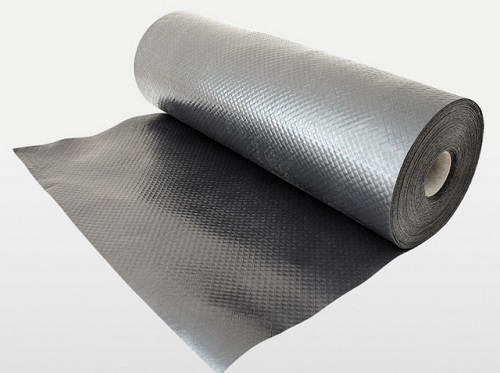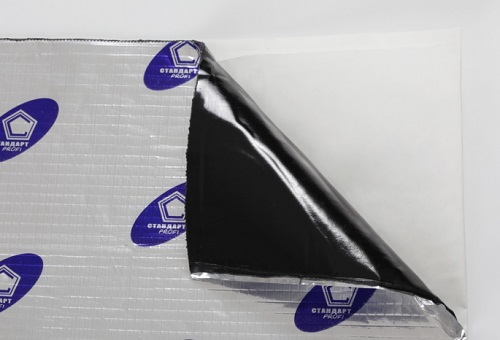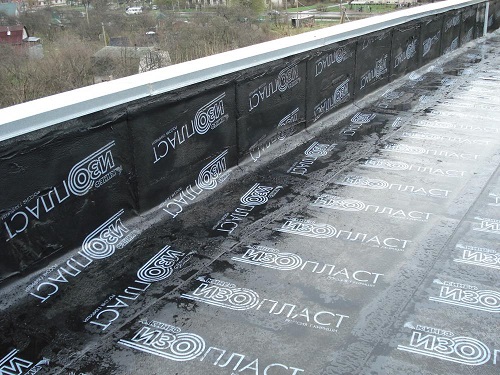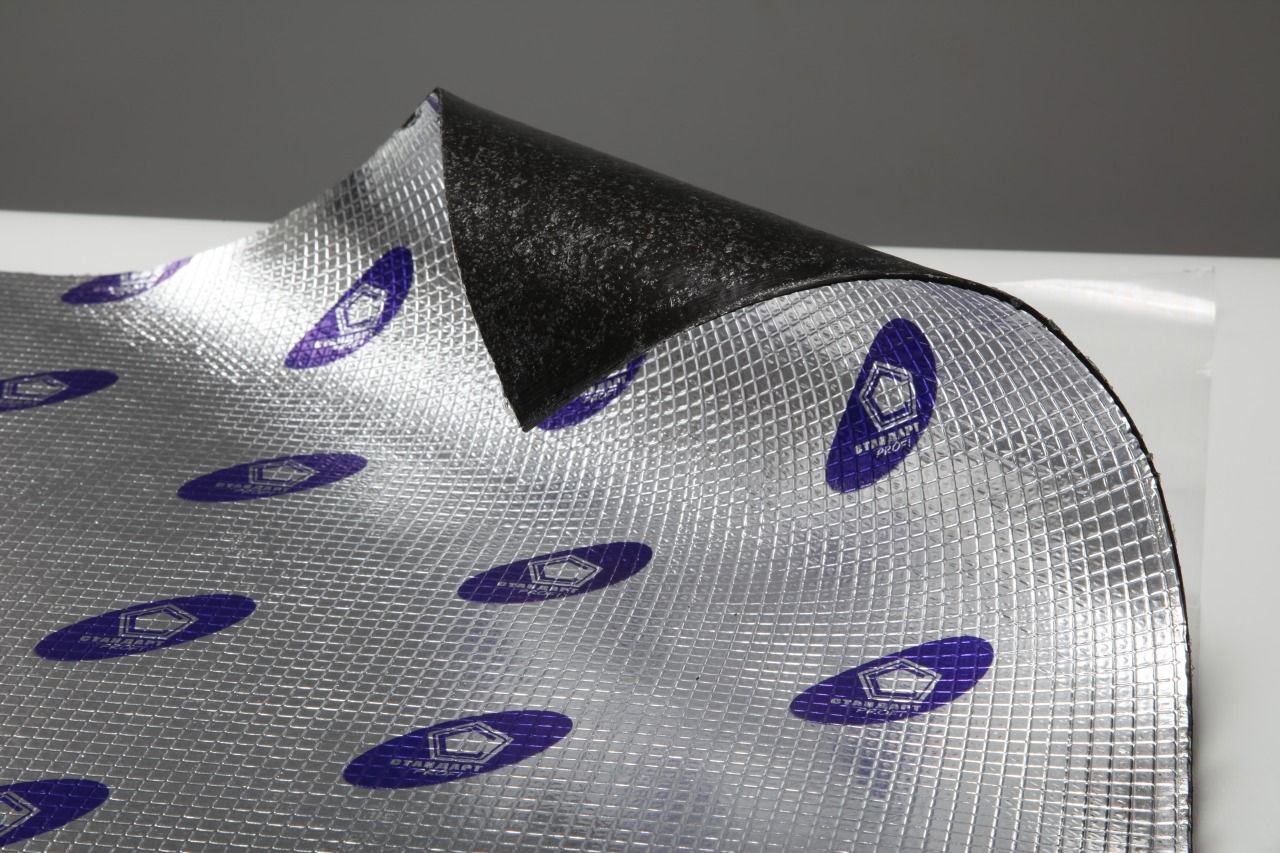
Each developer wants to cover his roof with a material that would ensure its absolute waterproofness and have a long service life. If you are still in search, the roofing material isoplast will solve these problems. It will make your roof a reliable protection for many years.
Many residents of the upper floors are anxiously awaiting the autumn and winter season, when the roof can become a source of ongoing problems. Thanks to this modern material, any roofing becomes an impregnable barrier to water and everything connected with it. A guarantee of protection is the absolute waterproofness of the isoplast, which is achieved due to the fact that the material does not absorb water at all. As a result, it does not suffer from the effects of water crystallization and does not become brittle in severe frost (up to 30 degrees below zero). Its special elasticity makes it possible to carry out work even at sub-zero temperatures.
Isoplast, as a roll coating, is used not only as a waterproofing material, but also for roof insulation. It is made on the basis of low-oxidized bitumen, atactic modified polypropylene and a non-woven base, which is made of polyester or fiberglass. The components are listed in accordance with the sequence of their application to the roof surface:
- astringent bitumen-polymer substance;
- film or topping;
- base coating;
- film or sand;
- astringent bitumen-polymer substance.
Content
Advantages and disadvantages of isoplast
Perfect building materials do not yet exist, therefore, it is also impossible to say about isoplast that it has no shortcomings. However, compared with other roofing materials, isoplast roofing material can proudly present its undeniable advantages. These include:
- resistance to large loads, under the influence of which it does not deform, does not crack, does not glass and does not break. It does not lose its strength during operation;
- the ability to carry out installation and construction work in the winter. For this, it is enough to clean the base of the roof from the formed ice. Its indifference to subzero temperatures allows, if necessary, work even at -20 ° C;
- absolute immunity to very high temperatures (can withstand + 125 ° C), which provides mineral sprinkling;
- the ability of an isoplast roof to block the reproduction of organisms such as fungus, mold, etc. You will not see such a roof covered with green moss and other vegetation;
- absolute non-toxicity of the material;
- Absolute compliance with all standards of existing standards (SNiPam);
- profitability of the material isoplast, the technical characteristics of which do not become worse after many years of operation. And although the cost of one meter of coverage may seem expensive, but having made such a high-quality coating, it will be possible to save on subsequent repair and maintenance of the roof, which cannot be said about other roofing materials;
- its versatility, since isoplast can cover different types of roofs - both flat and pitched;
- simplicity of installation work, when the efforts of two workers are enough to achieve the result;
- its ability to interact with any kind of base, the main thing is that it is solid. It can be laid on concrete, wood, plywood, OSB, particleboard and other types of surfaces;
- long service life when the material laid on a solid foundation is able to last more than 20 years. In this case, the roof can survive even the most adverse conditions, up to constant temperature changes.
To make a list of isoplast deficiencies is a rather difficult task or, rather, even impossible. Research and development, conducted by various specialists, allowed to create an isoplast roofing material, the manufacturer of which guarantees its unique qualities. Compared to its predecessors, it can be considered ideal material, devoid of any negative qualities.
Isoplast Specifications

According to its structure, the composition of the roofing material of the isoplast can be described as a fiberglass or polyester base, which on both sides is fused from a mixture of bitumen and some polymer additives. This deposited material has properties that allow it to be flexible and not break or crack.
On the bottom side, the material has a coating in the form of a polymer film designed to protect it and preserve it. The top layer is a plastic film (lining material) or a shale film with a special coating (roofing material). Sprinkling can be of different sizes - small and larger. The size depends on the place in which isoplast waterproofing is to be used.
Roofing material having a front side protected by a coarse-grained sprinkling, and a reverse one - with a plastic film, is made for use on the top layer of the roof. In the lower layer is coated with isoplast having a double-sided fine-grained coating or a polyethylene film layer.
The quality of the finished material directly depends on the quality of bitumen. Waterproofing properties are provided by the front layer, and adhesion to the base of the coating is due to the lower layer. Its thickness is the same for any type of isoplast and has a size of 2 millimeters. The size of the facial layer may vary depending on the place of its use.
Varieties of roofing material isoplast
Roofing material with this name has several varieties:
- For the installation of the upper layer of the roof isoplast "K" is used. Its outer side is covered with coarse-grained topping, which is roofing slate or granulate. The inner side is covered with a polymer film, and sometimes with fine-grained sprinkling (sand). Sprinkles may have a different color and may be gray, green or red. Isoplast, designated by the brand name "K", is divided into isoplast ECP 4.5 and isoplast ECP 5.0.
- Isoplast "P" is called gluing waterproofing, the upper and lower layers of which are coated with a polymer film. As a coating, fine-grained sprinkling in the form of sand can act. The material is used in the lower layer of the roofing. Isoplast P is subdivided into such types - isoplast EMF 5.5, isoplast EPP 4.0 and isoplast HPP 3.0.
- Isoplast DP acts as a kind of vapor-conducting layer, the basis of which is perforated fiberglass. Its subspecies are isoplast DHP 2.0, isoplast DHP 2.5, isoplast DHP 1.5.
In order to make the right choice, it is necessary to study in advance the characteristics of any building material. Isoplast, the characteristics of which, depending on the species, have some differences, is also no exception. It has different manufacturers, but, in any case, its high quality corresponds to the price.
Characteristics of some types of isoplast
- Isoplast EPP is a rolled bitumen-polymer roofing and waterproofing material.Glass reinforcement (X) is used as a reinforcing base. The composition of the bitumen-polymer binder applied on both sides includes atactic polypropylene (APP polymer). Thanks to it, the best elasticity of the material at low temperatures, its performance and increase in service life are achieved. Both the outer and the inner sides of the isoplast EPP 4.0 are coated with a protective coating - a melting polymer film (P). It can be used in any climate zone of the country.

Among the features of this material, one can note its unique strength, due to the quality of the polyester material, which has a maximum percentage of elongation at break. Bitumen enriched with an SBS modifier and an increased amount of binder on the weld side allow us to speak of it as a material having the best performance in the Russian climate.
Isoplast EPP 4, the technical characteristics of which allow it to be used as the lower layer of the deposited roof during the implementation of a single-layer and two-layer coating, can last for 20-35 years.
- EKP isoplast is the latest material of the highest quality. With its help, waterproofing of such structures as tunnels, viaducts, bridges, pools, roads, etc.

Isoplast Roof Strength, durability, heat resistance make Isoplast EKP a unique material. It can be laid at low temperatures and used on a base made of metal. When compared with other waterproofing coatings, this type of isoplast has several advantages. Firstly, it has a sturdy construction that can retain its shape and not give in to the appearance of cracks during mechanical stress. Secondly, the material retains all these characteristics for 30 years or more.
- Isoplast HPP is used when building a built-up roof as a lower layer. Such waterproofing is used in various designs - foundations, basements, parking lots, garages, floors, boiler houses, etc. It is considered material made on an “economy” basis, i.e. fiberglass. It is used mainly as a lining material on roofs that are not loaded. As a waterproofing can only be used on horizontal surfaces. If you adhere to these recommendations, you can count on the long service life of the isoplast - up to 20-25 years, without any repair or replacement.
By releasing isoplast, the manufacturer guarantees its quality that meets technical standards and specifications. When buying material, a complete list of documents is given, its exact parameters are indicated with instructions for the production of works when using it as a waterproofing or roofing.
The material is truly universal, because it can cover any kind of roof - flat and pitched. Construction workers love him, because he is easy to install, which can be completed in the shortest possible time. The coating always fits perfectly on the surface, so two people with a burner are enough and you can make a roof with an area of 400 square meters in one shift. meters. Since all surfaced materials have a layer of bitumen, the fire helps them to perfectly adhere to the surface. Therefore, a roof covered with isoplast always has a beautiful appearance and a flat surface.





Alas, no comments yet. Be the first!